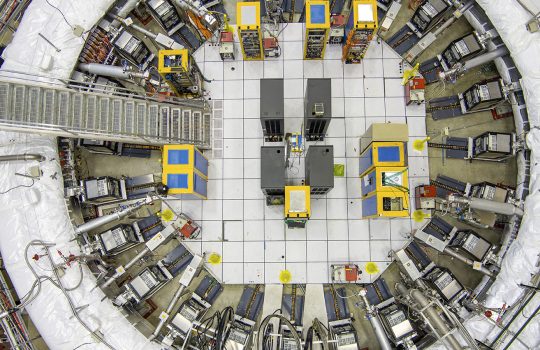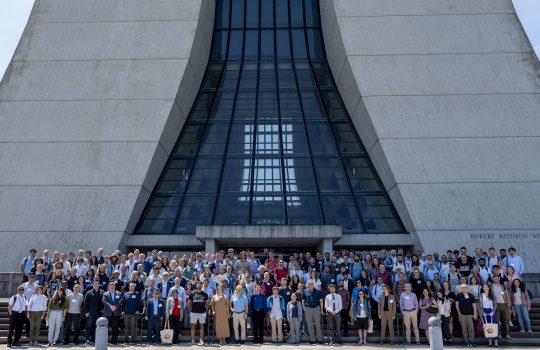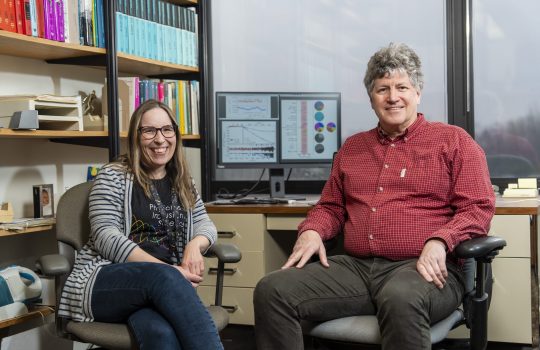Fermilab’s Muon g-2 experiment, which examines muons — short-lived particles that could open a window on possible sources of new physics — has elected Mark Lancaster to help lead it into the next stage of exploration. Lancaster, professor of physics at University College London and, beginning in September, the University of Manchester, will assume the role in early July.
Lancaster instigated the UK’s involvement in the Muon g-2 experiment five years ago and since has helped lead the design and construction of one of the Fermilab experiment’s two particle detector systems. He now takes the helm to co-lead the experiment itself, along with current Muon g-2 co-spokesperson and Fermilab scientist Chris Polly.
“Mark has played a vital role in building up the international collaboration,” Polly said. “As he takes on this leadership role, he’ll help bring a fresh, independent perspective at a time when the experiment has to be at its most introspective, moving towards our first physics result.”
Lancaster succeeds former co-spokesperson David Hertzog, physicist at the University of Washington. Lancaster and Polly say they are grateful for Hertzog’s impressive work on Muon g-2, overseeing some of the most crucial periods in its development.
“Dave has done an outstanding job leading the collaboration from the proposal stage, through construction and commissioning, and now to the point where the experiment is taking physics-quality data,” Polly said.
Muon g-2 scientists are measuring a property of the muon — a heavy cousin of the electron — called its magnetic moment. Departures from the predicted value of this property could point to new physics, including the existence of undiscovered particles or new forces, and pave the way for future experiments.
“At the moment, Muon g-2 is entering a very exciting time — we’ve just started our first major data collection period here at Fermilab,” Lancaster said.
At Muon g-2, muons travel through a large, 50-foot-wide particle storage ring with a strong magnetic field. As the beam of muons circles around the ring, they act like tiny, spinning magnets. Within the ring, the muon’s spin direction rotates around its axis — like a gyroscope — in response to the magnetic field. The muons subsequently decay, producing particles whose direction of travel is directly related to the muon’s magnetic moment. The amount the magnetic moment differs from predictions is due to virtual particles popping in and out of the vacuum.
The Fermilab experiment, a collaboration of over 25 institutions and almost 200 physicists and engineers, recently began the first of three year-long data-taking runs. It picks up where the Brookhaven National Laboratory Muon g-2 experiment left off. In 2001, Brookhaven first reported a discrepancy between the predicted and measured values of the magnetic moment. The storage ring was relocated to Fermilab in 2013. Now that the experiment has begun taking data, the goal at Fermilab is to collect 20 times the amount of data with four times the precision compared to Brookhaven.
“We’re currently seeking to measure the muon’s magnetic moment with a far greater precision than previously achieved,” Lancaster said. “By taking more data and reducing the systematic uncertainties in the measurement, we hope to conclusively confirm or refute the Brookhaven measurement.”
Lancaster says he’s excited to help lead the significant and potentially groundbreaking research for Muon g-2 and to work with a diverse range of scientists and engineers.
“What I look forward to most is working with all of the young people on the experiment who will have smart, new ideas for the way we analyze the data,” Lancaster said. “New approaches for analyzing the data will be invaluable in achieving our goal to solve the longstanding puzzle of the muon’s magnetic moment.”




